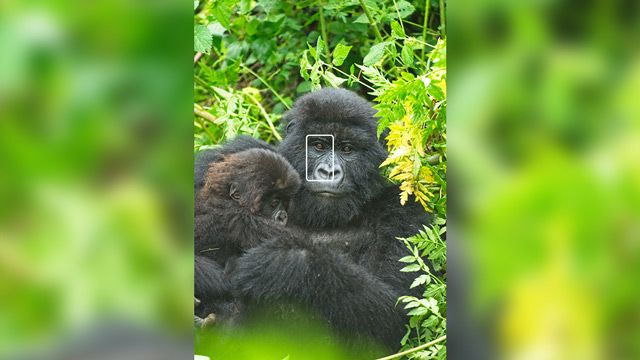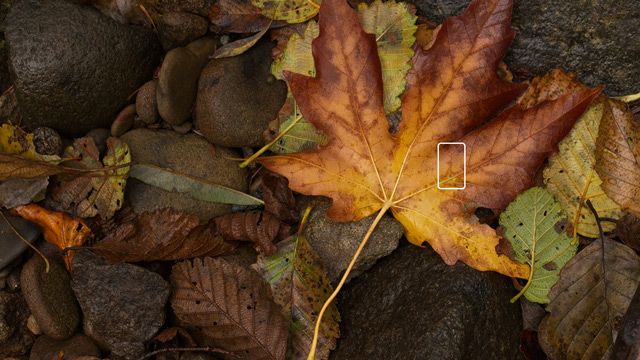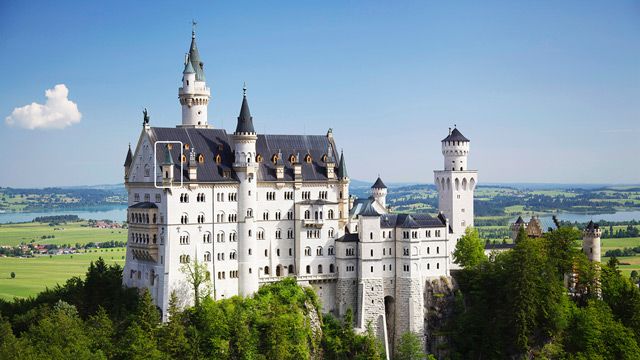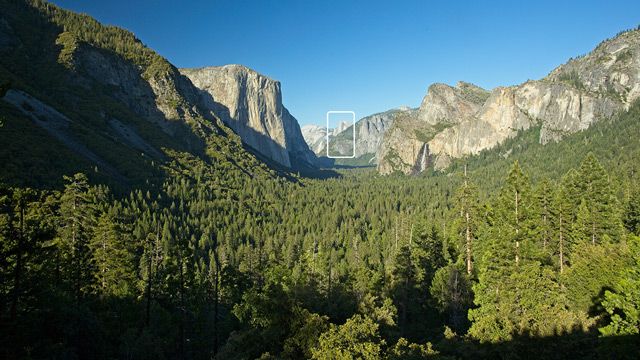ON1 Resize, powered by Genuine Fractals, has been the gold standard for photo resizing and preparing your photo’s final output, and it has been for over twenty years. ON1 Resize AI (coming in April) is the most significant improvement we’ve made to photo enlargement software since the early days of Genuine Fractals. Resize AI uses state-of-art machine learning to create the details and sharpness that get lost when you enlarge a photo. It goes beyond just keeping the edges sharp. It interprets elements in your photos and, in some instances, can create details to keep your enlarged images looking clean and crisp. It’s incredible!
In the past, interpolation methods were used to add new pixels to photos to make them bigger. You simply can’t stretch an image to be bigger without adding pixels, or the photo becomes pixelated in appearance.
When Genuine Fractals (and the following ON1 Resize) was introduced, it changed interpolation by using the power of fractals. This method creates a scalable skeleton of the photo to help maintain sharper edges, even though it still uses bicubic for the smooth and textured areas. This was much better over the traditional bicubic method, but the original information in the photo still limited the results it could produce. ON1 Resize AI solves the problem of creating new, believable details and pixels at scale. You will also have complete control over the sharpness of your results.
We train ON1 Resize AI by showing it millions of examples of photos. We can teach it to see textures like rocks, skin, fur, feathers, masonry, tree bark, etc. Then, it learns how to recreate these textures and make them look realistic in the upscaled photos. Check out these examples below.
The above example started as a raw file from a Nikon D200, an older camera. The original photo is only 2580×3857. We scaled it only 2x to make a print size of 17″ x 26″. This is an excellent example of how you can breathe new life into your old photos or mobile photos. In this comparison, we include a comparison with another popular AI-based interpolation app.
The above example also starts as a Canon raw file. We interpolated it just 2x, a typical range for most photographers, to see the difference you would get. It’s pretty striking when you see the difference in detail. In this example, we also compared the Genuine Fractals algorithm and Adobe’s latest super-resolution-based method.
The above example is another stock JPG image, interpolated 2x. I wanted to show a portrait photo to see how Resize AI balances details like hair and eyelashes with subtle details like skin. In this comparison, you can also see the standard bicubic and another popular AI-based interpolation app.
The above example is a stock image JPG. You don’t always have the luxury of starting with a raw file. This example has been sharpened and processed before we resized it and has some JPG artifacts from the compression. We scaled it 2x to a comfortable poster-print size. You will note how Resize AI removes the JPG artifacts while increasing the sharpness of the edges and bringing back the subtle detail in the brick. When you compare it to Genuine Fractals, you can see just how superior the new version is to the old.
The above example starts as a raw file from a Canon 5D MK II. Originally it was 5616×3744 pixels and would make a print almost 13″ x19″. We scaled it up 4x to make a print over 70″ long. Granted that it is bigger than many of us may make, I chose it to illustrate the point that Resize AI can create new details, guided by the original detail from the photo. If you look at the bicubic interpolated version, you will see how soft the photo is and how much detail is lost. When you compare that to Resize AI you can see the details in the rocks and the individual trees.
ON1 Resize AI is the perfect solution for cropping a section out of your photo if your lens can’t get you close enough or preparing and printing your biggest and best photos. It can crop, resize, and sharpen all at once. It can add wings for printing on canvas or create tiles for a mosaic. You can also batch process images and print them right from the app. You will be amazed by what you can do with ON1 Resize AI. ON1 Resize AI works as a plugin for Adobe Lightroom, plugin for Adobe Photoshop, and plugin for Capture One. Resize AI goes beyond the average plugins. In CaptureOne and Lightroom you can batch process easily with powerful new resizing options. And in Adobe Photoshop it can handle layered files with masks, alpha channels, text, and adjustment layers in RGB as well as CMYK, Grayscale and LAB.







16 comments on “Photo Enlargement Science is in the Details”
On March 24, 2022 at 12:19 pm Skip Fenn wrote:
Great if it works!
On March 24, 2022 at 12:20 pm Paul Bataille wrote:
It looks great generally, wonderful! In the examples there is however a tendency to exaggerate a little, becomes a bit artificial here and there. But it can be toned down of course.
On March 24, 2022 at 12:20 pm Paul Bataille wrote:
In the examples there is however a tendency to exaggerate a little, becomes a bit artificial here and there. But it can be toned down of course.
On March 24, 2022 at 12:27 pm David Price replied:
1 +
From the videos, it looks like there are sliders that can be adjusted. And yes, I often move the sliders down from their default positions in No Noise AI too. Just to take control and get the results that I like. I would guess that ON1 Resize AI will be similar.
On March 24, 2022 at 2:27 pm Paul Bataille replied:
My take exactly. I notice that here in some instances Resize AI gains in sharpness and clarity of edges, but even loses texture, which imo is an absolute no-go. For example in the tiles behind the tower of the fortress (Schloss), in the smaller nuances between the bigger veins in the leaf texture is lost.
On March 24, 2022 at 12:29 pm Patrick Smith replied:
Exactly
On March 24, 2022 at 2:30 pm Paul Bataille replied:
(Sorry for my insert above, now it looks as though you’re acknowledging what I wrote, when you meant to acknowledge David Price’s remark…)
On March 24, 2022 at 12:23 pm David Price wrote:
As a micro 4/3rds user, my sensors only have a maximum of between 16 and 20 mega pixels. So being able to crop in and to enlarge, in the way that you have demonstrated, will sometimes be very helpful. Even if I only double the size of my images, it will help to partly bridge the gap between micro 4/3rds raw files and typical full frame raw files.
This is just as ON1’s No Noise AI has already done for my cameras, in terms of noise. Where once I would have thought carefully before going over ISO 1600. Now, I am quite relaxed about shooting at ISO 6400. Because No Noise AI effortlessly cleans up the images. In fact, to me, the arrival of No Noise AI felt like an early Christmas present. i.e., it felt as though the ‘ON1 Elf’ had gone through my camera bag and installed new sensors. I am looking forward to feeling the same when Resize AI arrives.
By the way, the test shots look very good. And I would guess, that when Resize AI gets it’s first update, they will get better still. Just as No Noise AI did.
Best wishes to all at ON1 🙂
David Price
On March 24, 2022 at 1:56 pm Adam Rubinstein wrote:
Agreed, some of the examples in the video appeared excessively crunchy though one could likely turn the sharpness down. It would be helpful to demonstrate how the differences translate into prints and I hope On1 could share some examples?
With respect to NoNoise, I’ve found that Topaz noise AI RAW is now performing at a higher level especially with high iso color noise. Perhaps the on1 developers can make some improvements?
On March 24, 2022 at 2:27 pm Patrick Smith replied:
Actually, another NN update in the next couple months is coming.
On March 24, 2022 at 11:27 pm David Price replied:
Another update for NoNoise AI.. I’ll look forward to that too. 🙂 NoNoise is such an improvement over the previous tools, that I now use it on almost every raw file.
On March 26, 2022 at 8:58 am Robert Benyon replied:
I agree that at very high ISO above 10000 Topaz yields better definition and less colour noise. Below about 6400 ON1 has a slight edge but not by much. ON1 has the big advantage of being very fast. I hope that ON1 might develop a competitor to Topaz Sharpen AI as currently that is the one software by Topaz that is peerless.
On March 24, 2022 at 9:21 pm Paul Wong wrote:
I use On1 only, and have no experience in printing. I processed a few photos, cropped to my liking and sent to a printer for the first time. The lab told me the cropped photos cannot be printed on typical sizes such as 16 x 20, not due to the quality of my processed TIFF files. With my agreement, she printed: 8 x 14, 8 x 13 etc. None fits a typical picture frame.
Question. With this new ON1 Resize AI, can my photos be resized to fit conventional sizes such as 16 x 20? Suggestions on cropping?
On March 25, 2022 at 4:44 am Joe Munro wrote:
Is this update free with OnOne Photo Raw 2022?
On March 30, 2022 at 10:43 am Patrick Smith replied:
Yes, it will be in the next free update to ON1 Photo RAW 2022.
On March 26, 2022 at 8:51 am Robert Benyon wrote:
I actually prefer the Gigapixel results with the castle and leaf. The details look synthetic on the castle and fine details are lost on the leaf using ON1. I am always suspicious that competitors might not use the best settings when comparing their products. Gigapixel has different models that produce very different outcomes. However, if ON1 proved to be “about as good” as Gigapixel then I will prefer it as Gigapixel is very slow and I would prefer my workflow to stay within ON1.
Please review our our privacy policy for information about how we use the data we collect.